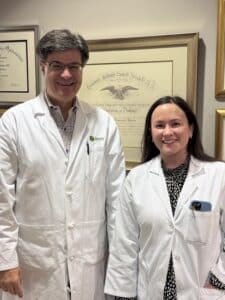Glaucoma is one of the leading causes of irreversible blindness worldwide. Despite this, many people are unaware of the risks and symptoms of this eye disease. At Jahnle Eye Associates, we want to raise awareness about glaucoma and emphasize the importance of regular eye exams in detecting it early.
What is Glaucoma?
Glaucoma refers to a group of eye conditions that cause damage to the optic nerve, which is essential for vision. This damage is often linked to increased pressure inside the eye, known as intraocular pressure (IOP). Over time, untreated high IOP can lead to vision loss.
There are two main types of glaucoma:
- Open-angle glaucoma: This is the most common form, where the drainage angle in the eye becomes gradually clogged, leading to increased eye pressure without noticeable symptoms.
- Angle-closure glaucoma: A less common, but more serious form, where the drainage angle is suddenly blocked, causing rapid and severe symptoms such as eye pain, headache, nausea, and blurred vision.
Who is at Risk?
Anyone can develop glaucoma, but certain factors increase the risk:
- Age: Those over the age of 60 are more likely to develop glaucoma.
- Family history: If glaucoma runs in your family, you are at a higher risk of developing it.
- Ethnicity: African Americans, Hispanics, and Asians may have a higher risk of glaucoma, particularly angle-closure glaucoma.
- Medical conditions: Conditions such as diabetes, high blood pressure, and previous eye injuries can increase the risk.
Symptoms of Glaucoma
One of the most concerning aspects of glaucoma is that it often shows no symptoms until significant damage has occurred. This is why it’s often called the “silent thief of sight.” However, angle-closure glaucoma can cause sudden symptoms like:
- Severe eye pain
- Blurry vision
- Headaches
- Nausea and vomiting
- Redness in the eye
Open-angle glaucoma typically progresses slowly, and the first signs are often subtle. You may not notice any vision changes until the disease has advanced. This makes regular eye exams crucial for early detection.
Why Early Detection is Key
At Jahnle Eye Associates, we emphasize the importance of comprehensive eye exams to detect glaucoma before it causes irreversible damage. During your exam, our doctors will measure your intraocular pressure, inspect the optic nerve, and check the drainage angle of your eyes to identify any signs of glaucoma.
Early detection and treatment can help prevent vision loss and slow the progression of the disease. Treatment options may include prescription eye drops, oral medications, laser therapy, or surgery.
Protect Your Vision with Regular Eye Exams
The best way to protect your vision from glaucoma is through regular eye exams, especially if you are at higher risk. Our team at Jahnle Eye Associates is here to provide you with expert care and the latest diagnostic technology. If you’re due for an eye exam or have concerns about your eye health, schedule an appointment with us today.
Conclusion
Glaucoma may not show symptoms until it’s too late, but with regular eye exams, early detection is possible. Don’t wait until it’s too late—protect your vision with routine eye care at Jahnle Eye Associates. If you have questions or concerns about glaucoma or any other eye health issues, contact us today to schedule your appointment.


